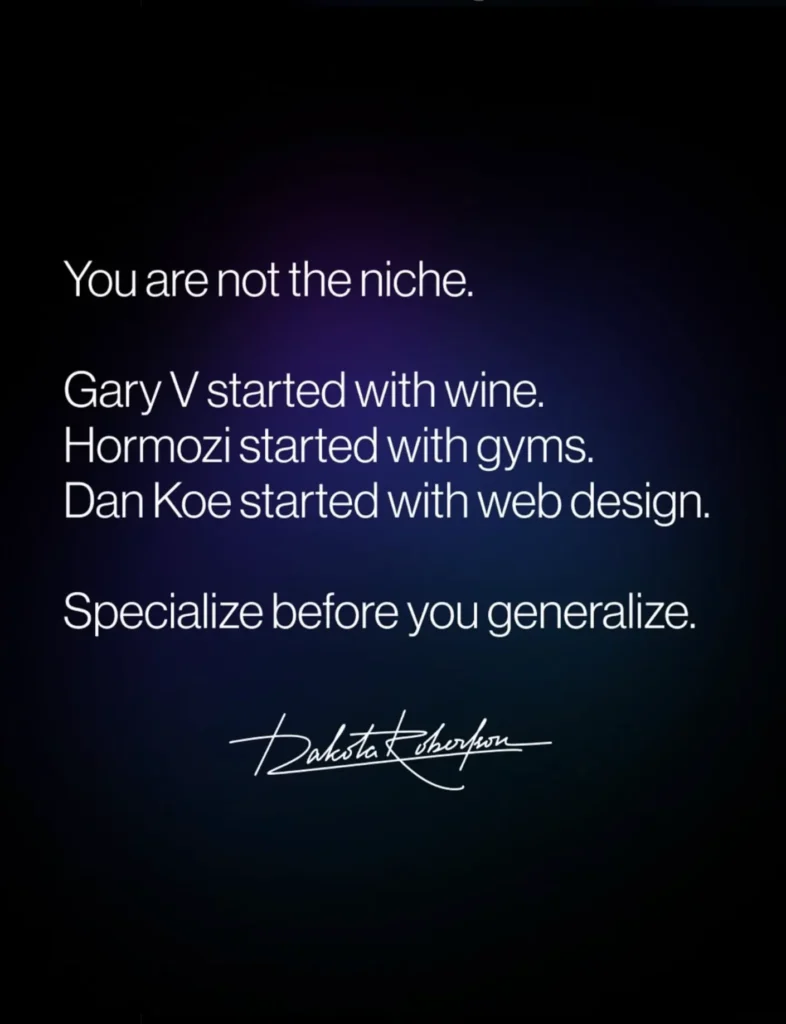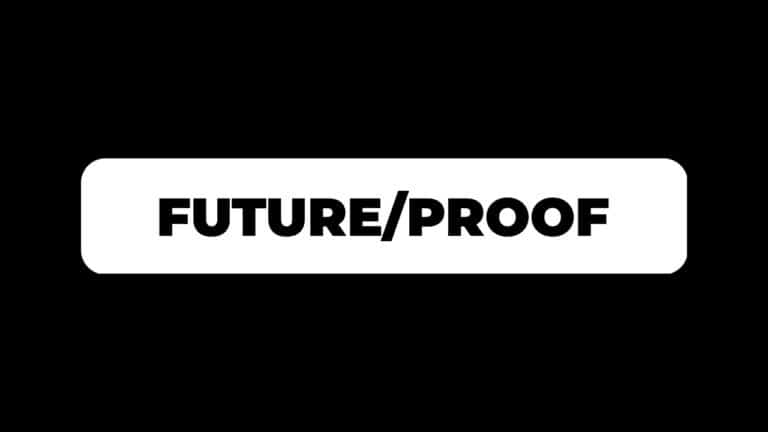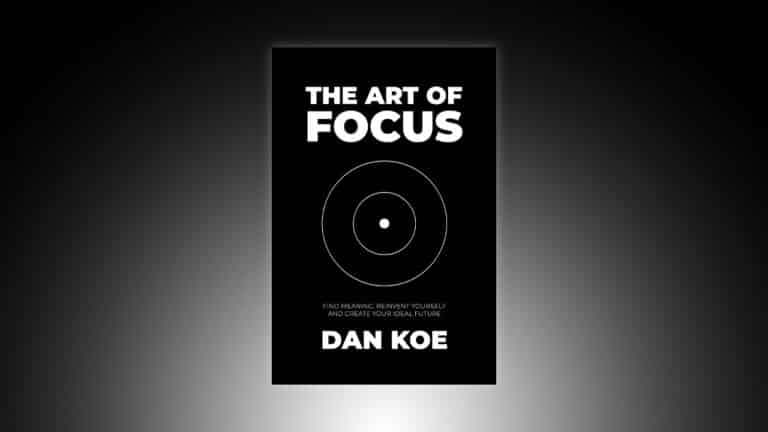The most profitable niche is you.
At least that’s what I said 3 years ago, leading to a world of both love and hate.
I received comments and messages from people mentioning how they “felt seen.” I met others in real life who told me that was the philosophy that made them start sharing their thoughts online. That phrase, “you are the niche,” made it into my first book and shaped how I go about meaningful work.
But then there’s the other side.
It seemed like every other day, I’d see a post, video, or newsletter titled “You are NOT the niche.”
And when I read or watched it, I couldn’t help but chuckle, because they’d expose that they only read my phrase you are the niche and reacted to it immediately without diligent research, or they just didn’t understand what I was saying.
Most people agreed with me without realizing it.
Take Dakota for example, a good friend that I lived with for 6 months in Austin, Texas.

I love Dakota with all my heart, but this is a half-truth.
I offered web design products and services, but only ~5% of my content had anything to do with web design. By all measures, if you go back to my tweets from 2019 and beyond, you will see most posts are on self-improvement, emotional intelligence, productivity, and whatever else I found interesting.
I could have offered (and did offer) any other product or service, not just web design, and done just as well. I’m confident in that.
You absolutely do not have to start narrow and then go broad, as we’ll find.
The entire reason I made the “you are the niche” video was because I was tired of people treating business like a religion.
If you don’t conform to what a business should be, you’re never going to make it!
So that’s what I want to do here.
I want to end this debate once and for all.
And rather than saying “the most profitable niche is you,” I’m going to give a completely different way of going about things.
If you’re lost on where to start, this may change everything for you.
Topic-Based vs Mission-Based
I’m going to call the “traditional” way to niche down topic-based.
In short, you choose a target audience and a topic, like writing or web design, to help that target audience with, like web design for construction workers. Pair that with a burning problem and you’re cookin. You can also niche down on the target audience alone, but when people are teaching a social media business, they’re usually referring to choosing a main topic to build authority in.
And I get it.
You don’t have to think much about what to create content about. It’s very clear how you should monetize, and you can do that quickly. You can become the “go-to” in your niche.
But here are my big gripes with this route:
- You are boxed into that niche. If you fail or try to pivot when you, as a person, change (which you will), you’re going to have a bad time. It’s anti-continuous learning, anti-polymath, and anti-human.
- It encourages searching for the “best” or most profitable. Most people quit because they switch niches 20 times because they are starting the business for the wrong reasons in the first place. Any niche can work if you’re actually good at what you do. (see: skill issue)
- It rips multi-passionate people to shreds. People with multiple interests don’t need to be told to choose only one. They need to learn how to channel them all into one thing. If you’re interested in multiple things, other people can be too, and you already follow plenty of successful people who talk about more than one thing. Use your eyes.
As you can tell, I’m writing this because I hate the thought of being put in a box.
I don’t want business to be another job I wake up and eventually despise. I want work to be a natural part of my life. I want it to be play. I want it to be my vessel to learn what I want, build what I want, and create what I want.
That brings up the better way to niche down, which I call mission-based.
When you’re building a modern business, you are a media business. If you aren’t on social media, you either aren’t reading this, or you’re just ignoring the necessary.
With social media, most people don’t take into account how content gets seen.
And how could they? They’re beginners. They don’t know any better. That’s okay.
Your content gets seen by other people sharing it (among other ways that aren’t needle movers).
When your content gets shared, it’s being shared with random people.
This isn’t paid ads where you can punch in the demographics you want to target and have every ad go straight to the niche you’re targeting.
This is why most beginners fail. Because they don’t know how to create content desirable enough to follow.
Now, who do people follow?
Leaders.
What do leaders have?
A mission.
Why is it a better option?
- Business becomes a vessel for your life’s work.
- You can talk about anything that moves people toward that mission.
- It is transformation based. Meaning, creating content is pain point and desired outcome oriented.
- It becomes so much easier to come up with ideas. Any idea you read, watch, or listen to that in some way aligns with your mission can be written down and spun into ideas under your own brand.
I actually just posted 3 drills to practice writing engaging short form content with any idea yesterday.
As you can tell, I recently rebranded my newsletter to “future/proof.”
That’s my mission. To help as many people as possible become valuable and adaptive while leading good lives.
To achieve that mission, it’s nearly demanded of me to talk about the ins and outs of business, productivity, self-actualization, technology, various skills, and more. I have a decade worth of content to put out to fulfill that mission.
Things have felt stale for me for a while. Ideas weren’t coming to me like they used to. When I decided to make this shift, great ideas started flooding back in. When I had the clear mission a few years ago to help people master the modern world (hence Modern Mastery, now closed), that was arguably when my best work was born, and it laid the foundation for the one-person business stuff many know me for.
The thing here is, both options work.
Dickie Bush and Nicholas Cole have a Write With AI newsletter that goes the traditional niche route. It does very well.
While I admire them in more ways than one (excited for another dinner with you soon Dickie if you’re reading this), I’d probably off myself before I did something similar.
The decision between topic-based vs mission-based is personality dependent.
Both have immense monetization potential.
But frankly, knowing my audience, I think mission-based is a better approach.
As much as polarizing absolutes go viral on social media, there is no one right way to do this. Hell, some people start posting without any form of plan and become a celebrity overnight. The truth is, you’re probably overthinking it (again), but learning how I think about it can help with clarity.
How To Lead A Mission
It hurts to admit this…
But the main reason you follow someone online is because you crave clarity.
When we find a piece of content that is confident, valuable, and authentically polarizing, you can feel the gravity of that creator. It feels like they have it all figured out, and we want that feeling too. It’s okay to admit that.
Now, I’ll tell you firsthand that nobody really knows what they’re doing.
Some people are just confident enough in their not-knowing that they are willing to put out ideas and advice that are more than likely wrong.
Many deep thinkers get trapped in this nuance spiral. They rip their own ideas apart, have zero conviction in what they’re saying, and water down their thoughts to the point of them being anti-action.
“Well this doesn’t apply to this person and this isn’t always the case” blah blah blah. Boring. Nobody wants to read that.
Listen:
- It’s better to have conviction in a bad idea and fail rather than be a leaf in the wind. At least you learn something when you’re wrong.
- The point of a great idea is to spark behavior change. When you give people the confidence and clarity to act, fail, and learn, you change more lives than nuancing yourself to death.
- Having confidence and a hint of exaggeration helps you get the point across. If people don’t get the point, or they read literally rather than metaphorically, let them. More exposure for you.
Those 3 bullet points will help you grow faster than any other social media advice you’ll get. Be you without regret.
Keep those in mind as we continue.
Now, pull out a piece of paper or open your favorite notes app and start jotting these down.
If you download the Kortex desktop app, you can open a floating note with Option or Alt + D (and a floating AI chat with Option or Alt + A if you’d like).
1) You need an enemy to attack
Answer these questions:
- What way of life is the bane of your existence?
- What are you doing to avoid that life?
- Why is it so destructive?
For some reason, I always despised getting a 9-5 job. I know that puts me in the cliche “9-5 hater” camp even though that’s not what I am, but I just couldn’t do it. It seemed like everyone who had a life I didn’t want to live was in that situation, mostly because they had long hours of work they despised, which also drained them of energy to do anything worthwhile throughout their days. Most people are walking zombies. I don’t care about the outliers. MOST people are.
That became my driving force to learn and do everything I could to avoid that. I wanted to master the modern world. I wanted to become future-proof.
2) Create an identity for people to adopt
On the flip side of your brand enemy is the archetype of a person you want to become.
When you follow someone or purchase something, the underlying reason you do so is because you want to become someone (or reinforce who you think you are).
People don’t follow you because they like your ideas. They follow you because your ideas influence their behavior to solve a problem in their life that’s preventing them from reaching their potential.
Name your mission in alignment with this.
Modern Mastery gives off an image of who they can become.
Future Proof hints at the same thing.
As does 2-Hour Writer.
The one-person business, the value creator, or any of my top content always falls within this pattern.
Brainstorm 5-10 names for this and sleep on them.
They don’t have to become a product, social account name, or newsletter name for you unless you want them to. They are simply your guiding light.
3) Build a world for people to explore
Your niche isn’t displayed in a one-line brand statement.
“I help ____ do ____ without ____” is a relic of the past.
Instead, your niche is illustrated by your body of work and those who are attracted to it.
Business now is less about countdown timers and sales funnels. It’s more about building a world for people to explore. Like a small-scale Marvel Cinematic Universe with movies (long-form content), spin-off shows (short-form content), action figures (products), and the rest.
You need to be consistent enough that people can binge everything you have to offer over the course of a week, because that’s how people consume things now, and that’s when you’ll actually start making money. When one of your posts does well, they’ll start searching everywhere to get more information, or something like YouTube will continue showing your older content to them.
I posted 30-40 YouTube videos before one did well. Before, they had 2-3k views. After one video did well, they all rose to over 100k views. What you post now, even if it doesn’t do well, can be seen once you hit your growth spurt.
If you post 10 times and quit, you have no idea how any of this works.
I wrote about “how to build a world” with a content ecosystem here for those interested.
Now, you need to go about this in a smart way. Here’s what I’d do:
- Find 3-5 accounts that talk about similar things you want to.
- Filter their content by most popular and note down 5-10 of their best pieces of content.
- Recreate those topics but from your own perspective and toward your own vision.
- Incorporate the fundamentals consistently. If you talk about writing, teach the basics of writing. Most people who follow you will be beginners.
- Read non-mainsteam books and follow people with great ideas that aren’t well known. Take those ideas and spin them for your own mission.
And of course, write about any ideas that come to mind.
It helps to learn how to package those ideas so they can always do well (even if they’re boring). We’ll talk about that in the next letter.
4) 80% why 20% how
Most beginner’s content flops because:
- They don’t hit pain points hard enough
- They don’t give people a reason to follow them
At the end of the day, people don’t share your content because it doesn’t speak to their situation. It doesn’t get into their brain and show them that there is potential for them to achieve.
Nobody is scrolling social media to read your deep thoughts.
They’re also not scrolling to learn a new skill. If they want to learn something, they would search for it intentionally on Google, ChatGPT, or Youtube. They don’t log on a social timeline looking for specific information.
They will only care about your deep thoughts or that new skill if you persuade them as to why they should care.
I started with web design, sure, but the way I made people want to learn web design was by talking about the “why:”
- It is a profitable skill to learn
- It’s great for people who want to do something creative
- You can use it to get a better job, start freelancing, or build a site for your own business
It wasn’t something as silly as web design that made me grow. It was my ability to get people to care about it.
So, before you hit send on any piece of content you write, ask yourself:
- Why should they care?
- What’s one big pain point this solves?
- How can this massively benefit the average person?
The last one is key, because remember, your content will be shared to random people on the internet, not just experts in your topic choice.
Actionable steps or “value” are secondary. It’s nice, but it often doesn’t matter for short-form content unless it’s something novel or little known. If it’s super basic, then I’d save that for a time when beginners are looking for more information from you (a beginner course, guide, small software, whatever digital product).
I’ll leave it there.
I genuinely hope this helped.
– Dan
When you’re ready, here are a few ways I can help further:
- The latest paid post is 3 drills to practice engaging short-form writing. You can see all available paid posts here.
- If you want all AI models in one place, the ability to reference documents and PDFs fast, and 25+ prebuilt workflows for learning, writing, marketing, and planning – sign up for Kortex free here.
- Every Saturday, I send out a high-signal summary of all my writing to 175,000+ people on my personal list. If you’d like to receive it, you can join here.



